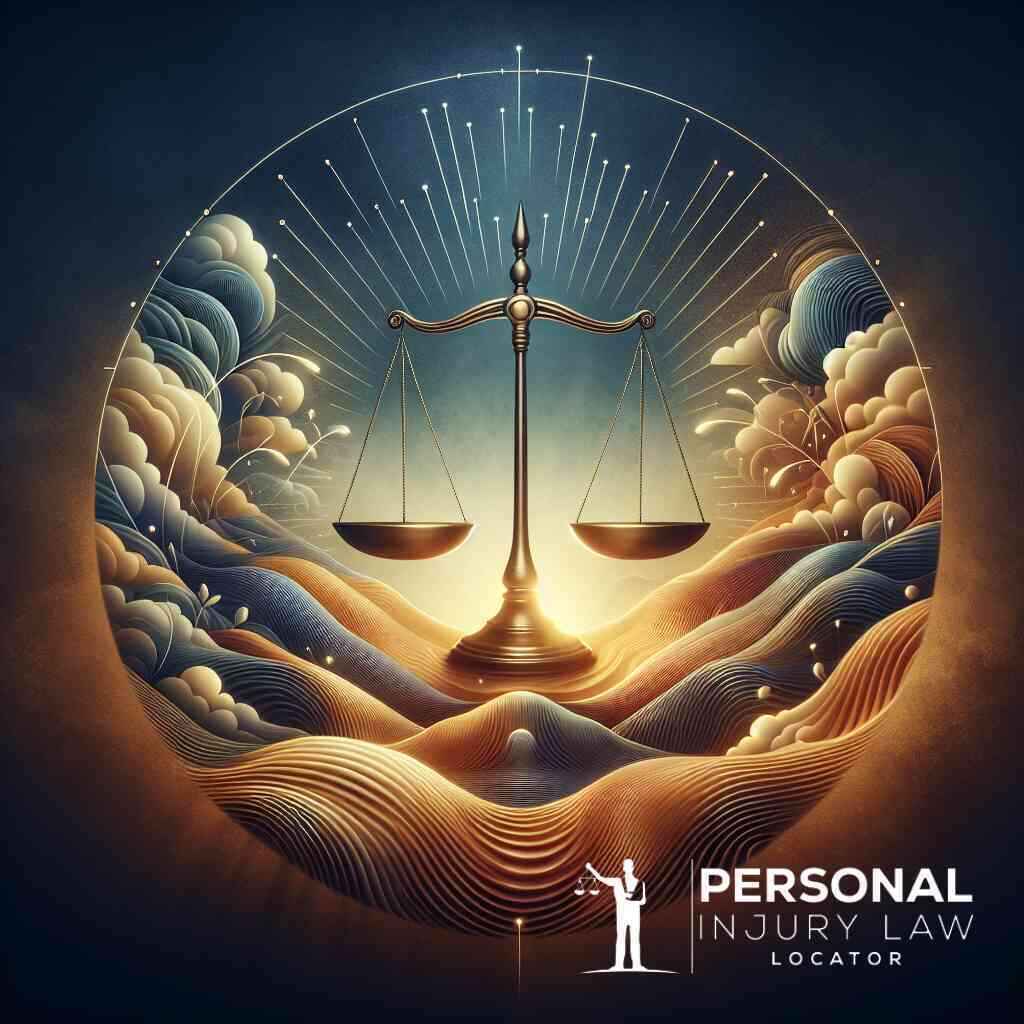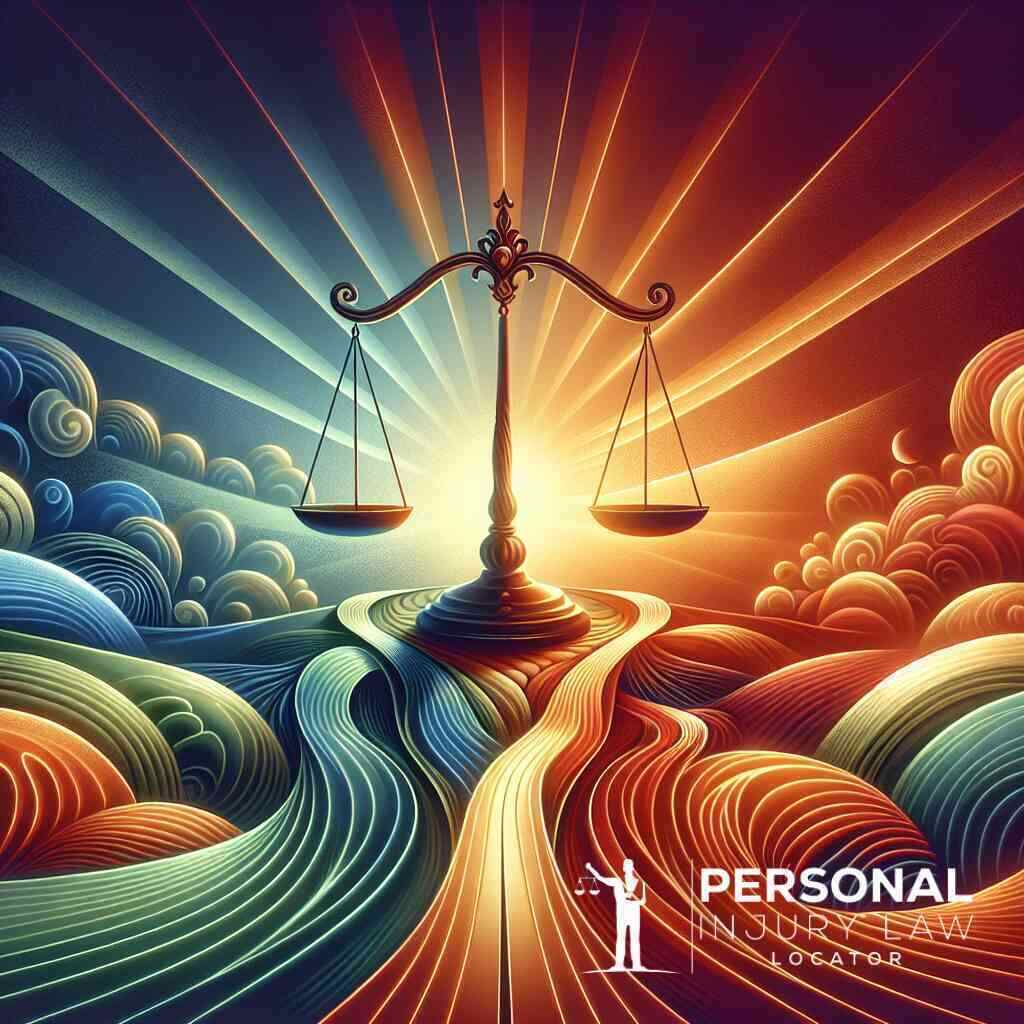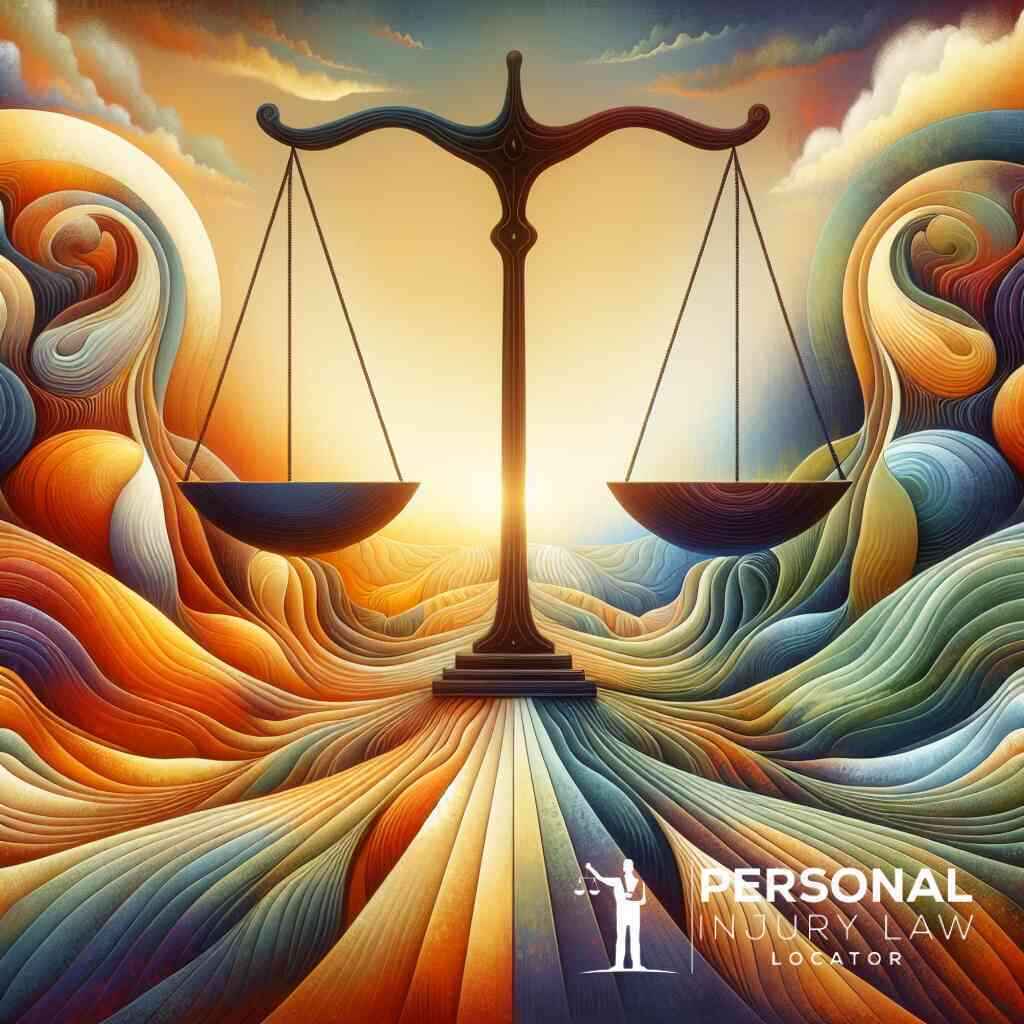 Posted On: 10/10/2024
Posted On: 10/10/2024Navigating the Complex Legal Terrain
Demystifying Personal Injury Claims
Embarking on a personal injury claim journey can feel overwhelming, but it’s the initial step for injured victims seeking justice. A personal injury claim is a formal request to an insurance company for compensation due to damages from an accident. The claim aims to cover medical bills, property damage, and other associated costs. At the core of personal injury law lies the injured person’s right to seek compensation for suffering and losses. Filing this claim initiates negotiations, where the expectation is to settle outside the courtroom through a fair offer. Engaging with a personal injury lawyer near you can streamline this process.
Understanding the Essentials of a Lawsuit
When injury claims do not yield favorable outcomes, the next realm is initiating a lawsuit. A lawsuit is a legal action brought before a court that involves formal legal proceedings. Within this judicial context, the injured party, known as the plaintiff, files a complaint against the party at fault. The lawsuit meticulously outlines the cause of action, and the relief sought, usually monetary damages. Unlike claims, lawsuits are adversarial, demanding preparation for court proceedings. The court proceedings in injury lawsuits demand an equipped legal team articulate in evidence presentation.
Claims vs. Lawsuits: A Legal Comparison
Distilling the nuances between a claim and a lawsuit enlightens the personal injury journey. A claim involves negotiations with insurance companies seeking settlement without legal intervention. Lawsuits, conversely, proceed through court with a focus on obtaining a judgment. Claims typically resolve faster, encompassing demand letter submissions and settlement negotiations. Lawsuits, however, offer recourse when claims fall short, demanding rigorous proof and articulation of a cause of action. This distinction underscores the difference between personal injury claims and lawsuits, clarifying the cascading steps one might face in pursuit of justice and compensation for one’s injuries.
The Preceding Path: Claims Unveiled
Initial Steps: Filing a Personal Injury Claim
Launching a personal injury claim requires precision and awareness of the claim filing procedures. This step is crucial as it establishes the injured person’s intent to seek compensation for damages and losses incurred. Claimants should meticulously document every detail of the incident, ensuring that all evidence relevant to the case is preserved. Collaboration with medical professionals will validate the extent of injuries, providing substantiation for the claim. Once armed with evidence, individuals must swiftly engage with a seasoned personal injury lawyer near them to guide the entire process, ensuring compliance with pertinent legal standards and timelines.
The Demand Letter: Crafting a Persuasive Argument
The demand letter is a strategic cornerstone in personal injury claims. It serves as a formal correspondence to the insurance company, outlining the extent of the victim’s injuries and requesting specific compensation. Crafting this persuasive document demands a thorough narrative of the incident, including evidence that definitively supports the claimant’s position. This letter should clearly articulate the incurred medical bills, emotional distress, lost wages, and property damage. A well-prepared demand letter can set a positive tone for forthcoming negotiations, fostering an environment ripe for settlement. Engaging adept legal representation bolsters the credibility and efficacy of the demand letter, positioning the claimant favorably.
Evaluating Claims: Determining Liability and Damages
Accurately evaluating personal injury claim damages requires rigorous analysis, focusing on determining liability and the extent of damages. Legal experts assess the cause of action, examining incident details to establish fault and the degree of negligence involved. Engaging with financial and medical professionals offers insights into the quantifiable and non-quantifiable losses suffered. Evaluating claims entails a comprehensive look at the future implications the injuries might impose on the claimant’s quality of life, thus influencing the compensation sought. This stage is pivotal, dictating potential settlement ranges and shaping initial negotiation tactics in the pursuit of justice.
Settling Outside of Court: Negotiating with Insurance Companies
Achieving a settlement outside the daunting courtroom environment is often the preferred resolution to a personal injury claim. Settlement negotiations with insurance companies demand acute knowledge of legal rights, valuation methods, and negotiation strategies. The insurance company aims to minimize payouts, underscoring the importance of a knowledgeable advocate advocating for the injured party. Meticulous preparation for these negotiations involves assembling a robust legal team that can counter low settlement offers with compelling evidence and reasoned arguments. Armed with settlement negotiations with insurance, claimants increase their chances of securing a settlement that aligns more closely with their needs and the reality of their injuries.
Into the Legal Arena: A Lawsuit Begins
Legal Grounds: Understanding Cause of Action
Understanding the cause of action is pivotal when commencing a personal injury lawsuit. The cause of action refers to a factual situation that entitles the plaintiff to obtain a legal remedy against the defendant. It is the foundation upon which the lawsuit rests. In personal injury cases, this often involves showing that the defendant’s negligence or intentional act caused the plaintiff’s injuries. Plaintiffs must meticulously gather evidence supporting their claim, demonstrating causation and the extent of their damages. Understanding comparative negligence becomes critical in jurisdictions where a fault might be shared, influencing the potential compensation and outcome of the lawsuit.
Filing the Complaint: Legal Documentation Required
Filing a legal complaint for injury is a crucial step in advancing a personal injury lawsuit. This document officially initiates the lawsuit in court, laying out the plaintiff’s arguments against the defendant. It specifies the legal grounds for the case, details of the incident, and the compensation sought. Precision in drafting this document is essential, as errors can delay proceedings or risk dismissal. Legal experts, particularly personal injury attorneys, can guide the drafting process, ensuring compliance with local court rules and articulating a compelling narrative. Armed with a robust complaint, plaintiffs lay the groundwork for the ensuing legal battle.
The Pre-Trial Journey: Discovery and Evidence Gathering
The pre-trial phase, characterized by discovery and evidence gathering, is both exhaustive and critical in personal injury litigation. During discovery, both parties exchange information pertinent to the case, including documents, witness testimony, and expert opinions. This phase allows each side to assess the strengths and weaknesses of the other’s case, shaping strategies and settlements. The discovery process in injury lawsuits can uncover pivotal evidence, crucially influencing negotiations and preparations for trial. Engaging adept legal representation ensures thorough exploration and leveraging of every evidential avenue, often dictating the direction and intensity of the litigation journey.
Trial vs. Arbitration: Choosing the Right Path
Choosing between trial and arbitration presents a significant decision point in personal injury cases. Trials are formal judicial processes involving a judge and, often, a jury, resulting in a binding decision. They can be lengthy and costly but may be necessary when settlements fail. Arbitration, in contrast, involves a neutral third-party arbitrator who reviews the evidence and renders a decision, often faster than traditional trials. Exploring alternative dispute resolution in injury claims like arbitration can offer benefits of reduced costs and time efficiency, making it an attractive option for some plaintiffs wary of prolonged litigation. Deciding the appropriate path requires careful consideration of the specifics of the case and strategic legal advice.
From Claims to Court: The Intricacies of Resolution
The Burden of Proof: Establishing Fault and Liability
In the legal landscape of personal injury cases, the burden of proof is a pivotal element. It dictates the responsibility placed upon the plaintiff to establish that the defendant’s actions were the direct cause of their injuries. This involves demonstrating fault and liability through substantial evidence, which may include eyewitness testimony, expert opinions, and physical proof of injury. The plaintiff must effectively articulate the chain of causation between the defendant’s breach of duty and the injury sustained. Recognizing a breach of duty is essential in proving that the defendant acted in a manner contradictory to the standard of care expected.
Interpreting Comparative Negligence in Court Proceedings
Comparative negligence theory can significantly impact court proceedings in personal injury lawsuits. This legal doctrine assesses the plaintiff’s involvement in the incident, potentially reducing the compensation amount proportional to their degree of fault. For instance, if a plaintiff is found to be partially at fault in a motor vehicle accident, the recoverable damages might decrease by their percentage of liability. Understanding this aspect is crucial, as it influences negotiation strategies and courtroom tactics. Evaluating personal responsibility and the extent of contribution to the accident can alter case outcomes drastically, necessitating detailed examination by legal professionals.
Navigating Statutes: The Statute of Limitations Consideration
Understanding the statute of limitations in personal injury is critical in personal injury cases. These statutes impose deadlines for filing a lawsuit, varying by jurisdiction and case type. Missing these deadlines can lead to dismissal, forfeiting the right to legal recourse. Therefore, staying informed about respective time constraints and engaging with legal experts promptly ensures adherence to legal timelines. Proactively managing these deadlines, with the help of a knowledgeable legal team, safeguards the plaintiff’s right to pursue compensation.
Mediation as a Tool: Exploring Alternative Dispute Resolution
Mediation emerges as a powerful mediation as a legal tool in resolving disputes without resorting to trial. This process involves a neutral third-party mediator facilitating discussions between disputing parties to reach a mutually acceptable solution. Unlike adversarial court proceedings, mediation encourages collaboration and compromise, often leading to faster and more cost-effective resolutions. It provides a safe space for open dialogue, where parties can express their needs and explore creative solutions. Incorporating mediation in the dispute resolution strategy can lead to effective settlements, aligning with the best interests of all involved while reducing the emotional and financial toll of traditional litigation.
A Summary of Legal Confluence
The Financial Considerations: Evaluating Litigation Costs
Embarking on litigation in personal injury cases demands awareness of potential costs. From attorney fees to court expenses, the financial burden can be significant. Evaluating these litigation costs in personal injury is essential for informed decision-making. Plaintiffs should assess costs against potential compensation, considering the scale of physical injuries and required medical treatment. An insightful legal team will provide transparent estimates, ensuring plaintiffs balance financial commitments with justice pursuits.
Settlement Offers: A Cost-Benefit Analysis
Evaluating settlement offers entails a delicate balance of financial foresight and legal awareness. These offers, often proposed by insurance companies, weigh heavily in the journey from claim to resolution. Understanding the nuances involves analyzing the potential financial benefits against the risks and costs of prolonged litigation. Settlements provide quicker resolutions, often sparing the emotional distress of trials, yet must fairly reflect the nature and extent of the injured party’s damages. Engaging skilled injury attorneys offers strategic advantages; they assess offers against the backdrop of anticipated court rewards, ensuring decisions align with financial and emotional well-being.
The Conclusion: Moving Forward with Legal Decision-Making
Facilitating the next steps, post-claim, involves strategic legal decision-making. Plaintiffs often face intricate choices-whether to accept settlements or proceed aggressively toward litigation. This phase requires a synthesis of legal advice, personal circumstances, and financial considerations. The pathway selected impacts the duration and intensity of the legal journey. Competent legal representation aids in navigating these choices, evaluating options based on the case’s merits, and aligning actions with desired outcomes. The strategic understanding of a personal injury lawyer, in these instances, embodies the role of an attorney in personal injury suits, orchestrating informed actions.
Breach of Duty: Recognizing the Building Blocks of a Lawsuit
At the heart of personal injury lawsuits lies the concept of breach of duty. This legal foundation involves proving the defendant’s failure to exercise reasonable care, which directly leads to harm. Recognizing these building blocks demands an understanding of relevant laws and standards, such as those found in personal injury claims in Florida. Attorneys craft their arguments around evidence illustrating this breach, weaving witness testimonies and expert opinions into compelling narratives. Mastering these elements boosts the lawsuit’s strength, underscoring the need for adept legal representation. Through diligent evidence gathering, plaintiffs fortify their cases, poised for successful resolution.
Conclusion
Epilogue: The Road to Justice and Compensation
Embarking on the legal journey, whether through a claim or a lawsuit, marks the start of seeking justice and compensation. This pathway navigates the complexities of personal injury law, offering injured parties a structured avenue for recovery. Understanding every step- from initial claims to potential court rulings, empowers claimants to make informed decisions. Settlement discussions, negotiations, and potential trials make this journey multifaceted, emphasizing the need for informed decisions and strategic actions. As you traverse this path, aligning with legal experts ensures maximizing potential outcomes, substantially increasing chances for fair compensation and resolution.
Legal Representation: Why Hiring a Knowledgeable Attorney Matters
Securing competent legal representation epitomizes a pivotal decision in personal injury cases. A knowledgeable attorney provides insightful guidance, comprehension of legal intricacies, and adept negotiation skills. Their expertise in personal injury law amplifies your case’s strength, ensuring procedural accuracy and compelling presentations in court. Harnessing these legal dispute resolution strategies aligns your objectives with desired resolutions, safeguarding your legal rights. Moreover, an attorney’s proficiency in navigating settlement offers and leveraging evidence can significantly influence case outcomes, ensuring your interests are optimally addressed and defended.
Future Legal Pathways: Anticipating Legal Evolution
As legal landscapes evolve, staying attuned to emerging trends becomes crucial. Anticipating advancements equip individuals and legal practitioners alike to adapt promptly, ensuring continued success in personal injury resolutions. Innovations in legal technology, procedural reforms, and evolving statutes present opportunities and challenges. By remaining informed, claimants and attorneys alike can harness new methodologies, improving efficacy in accident compensation guidelines. Navigating this dynamic environment demands continuous learning and strategic foresight, ultimately ensuring successful navigation through the ever-evolving legal terrain.
Frequently Asked Questions
Question: How does the Personal Injury Law Locator assist in navigating the claim filing process?
Answer: The Personal Injury Law Locator simplifies the claim filing process by connecting you with seasoned personal injury lawyers who are adept at handling claims efficiently. These legal experts ensure meticulous documentation of every detail related to the incident, collaborating with medical professionals to substantiate your injuries. By managing communications with insurance companies and strategically crafting demand letters, they effectively streamline settlement negotiations. Engaging their services can significantly enhance your chances of a favorable settlement, ensuring your journey from claim initiation to resolution is as smooth as possible. What Defines a Quality Personal Injury Lawyer?
Question: What distinguishes a personal injury lawsuit from an insurance claim, and how can a Personal Injury Law Locator help?
Answer: While a personal injury claim involves negotiating with insurance companies for compensation without court interventions, a lawsuit signifies formal legal action in court when a claim doesn’t yield the desired outcome. Personal Injury Law Locator provides access to experienced attorneys who adeptly manage both claims and lawsuits, ensuring strategic representation during settlement negotiations and if needed, court proceedings. By partnering with our network of lawyers, you ensure that your legal rights and interests are vigorously defended, maximizing your compensation potential.
Question: How can the Personal Injury Law Locator aid in understanding and leveraging the statute of limitations?
Answer: Personal Injury Law Locator offers guidance on the critical aspect of the statute of limitations, ensuring you are aware of the time constraints for filing personal injury lawsuits. Our partnered attorneys keep you informed of relevant timelines specific to your jurisdiction, ensuring you meet all deadlines to secure your right to legal recourse. This proactive legal management prevents forfeiture of your legal rights and optimizes your case’s success, demonstrating the pivotal role of timely legal advice in injury compensation claims.
Question: In terms of claim evaluation and injury liability assessment, how do the services of the Personal Injury Law Locator prove beneficial?
Answer: Personal Injury Law Locator’s services are instrumental in accurately evaluating claims and assessing injury liability. Our network of legal experts provides a comprehensive analysis of the incident to establish fault and the extent of damages, which is crucial for determining potential compensation. How do Personal Injury Claims Differ Across the US? They engage financial and medical professionals to offer insights into both the immediate and future implications of injuries on the claimant’s life. This detailed evaluation drives informed negotiation tactics and strengthens your position in securing fair and just compensation for your injuries.
Question: How does the Personal Injury Law Locator address the topics covered in the blog Understanding the Difference Between Claims and Lawsuits?
Answer: Personal Injury Law Locator aligns with the insights in the blog Understanding the Difference Between Claims and Lawsuits by offering a cohesive approach to both personal injury claims and lawsuits. Through their extensive network of skilled attorneys, they provide legal guidance from claim initiation through complex court proceedings, ensuring comprehensive representation every step of the way. How to Navigate Civil Lawsuits in Personal Injury? Their expertise in legal dispute resolution, settlement negotiations, and trial preparations equips you with strategic advantages, making them a trusted partner in your pursuit of justice and compensation. Best Practices for Secure Injury Settlements in 2024




